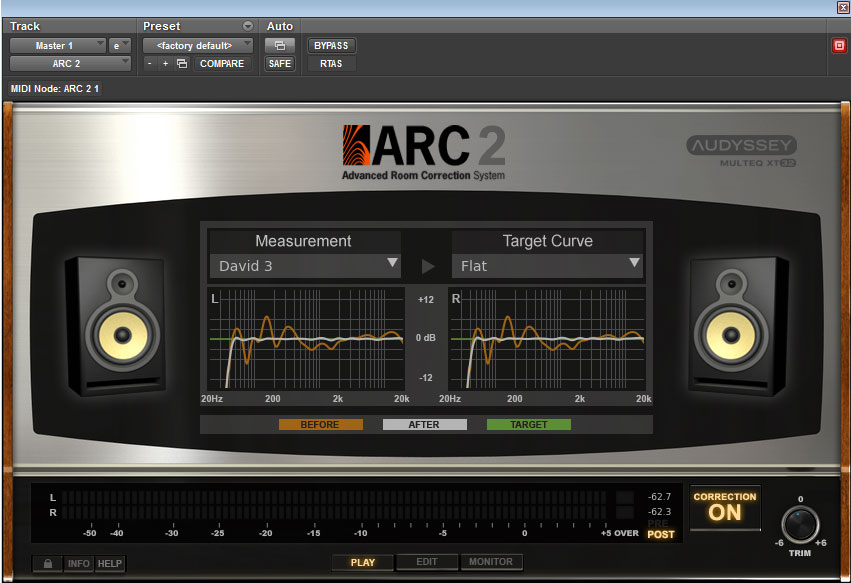Hello,
I recently took the plunge and bought IK Multimedia’s ARC 2 System for my project studio. What exactly is this, you ask? Well, allow me to explain.
ARC stands for Advanced Room Correction and a while back I wrote a post where I touched a bit on it while discussing room treatment for my home studio. At the time of writing that post I even reached out to mixing guru, Bobby Owsinksi, regarding his thoughts on the product. He wasn’t too much a fan, but for good reason. I agree with his comment in that one should use acoustic treatment first and foremost and attempt to correct any room issues that way before splurging on some digital gizmo to do it for you. So, I did just that. I added some acoustic treatment first and foremost and it knocked out a large portion of my frequency issues. Hooray! However, my budget and expertise in room treatment is limited and lo and behold, there was still some nagging frequencies roaming my room. Like most home studios, my room is not perfect and it would take some major time, money and know-how to knock out the remaining frequency issues via acoustic treatment. Enter ARC 2, to polish it all off. The theory is this gizmo will tell me where my room acoustics are now that the treatment is in place and correct the remaining issues for me.
So, how does it work? Essentially, you set up the accompanying omni-directional microphone and it picks up the sequential “chirps” that the ARC software spits out of your speakers and uses this to measure your room acoustics. After each set of “chirps” you move the microphone around the listening spot you are attempting to measure. Once all of those measurements are done, ARC then analyzes the data and gives you a measurement reading of your room acoustics. You’ll see this measurement reading once you open your DAW and instantiate the ARC plugin at the end of your mixing chain.

The process of using ARC 2 can seem a bit convoluted, but its actually very, very simple and quick to do. Here are a series of videos that do a better job of explaining the process and the product than I could ever do.
The idea is that ARC EQ’s your mix to eliminate the troubling frequencies that essentially hinder your listening space when mixing. So, if you have a huge bass buildup around 300Hz, it will EQ that out in an attempt to make a flat EQ response coming out of your monitors (ideal for mixing). That buildup at 300Hz is the bass bouncing around your room and back to your ears, not the actual mix. If you take that mix and listen through headphones you’ll not hear that bass buildup. So theoretically, by using ARC 2 you won’t be upping the levels of your higher frequencies in order to compete with the lower frequencies that aren’t really present in your mix in the first place. Thus, helping you achieve a better mix more efficiently.
At any rate, I did the measurements the other night and I must say that once I put this plugin on my mix there was a definite audible difference. In fact, I liked it because upon bypassing it I could hear all the bass buildup that it was removing. This can be seen in the photo below.

I don’t think my home studio is too far off from your average home studio in regards to the EQ measurement I received: plenty of low end. Ideally, one would want to just add the treatment needed to fix the issues and not mess with any fancy plugins in your DAW. In this ideal scenario, you would just use ARC 2 as a measurement tool only, not a correction tool. But, as I’ve stated earlier, this ideal scenario is beyond most home studio budgets and know-how, which makes the combo of room treatment and ARC 2 a great alternative. I’m pleased with the results so far. ARC 2 does what it says and its actually well-priced. You can pick one up here.
Till next time…
David (Cali Dingo)
